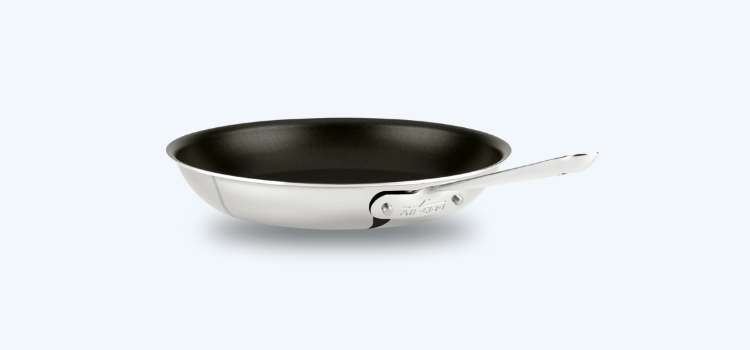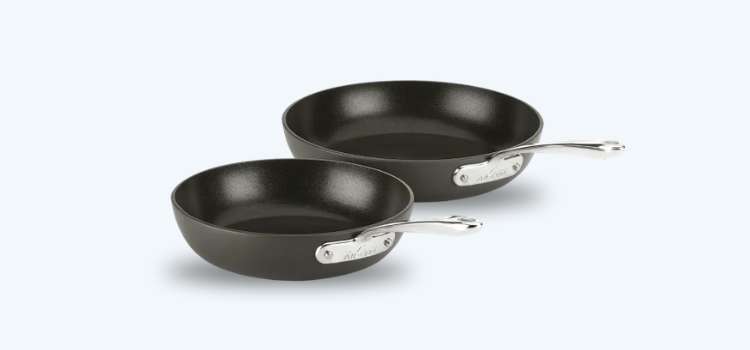As an Amazon Associate, I earn from qualifying purchases

When it comes to cookware that stands the test of time, All-Clad is a name that resonates with both professional chefs and home cooks alike. Known for its exceptional quality and durability, All-Clad cookware has become synonymous with reliable performance in the kitchen.
Whether you’re searing a steak to perfection or gently sautéing vegetables, these pans deliver consistent results. But one question that often arises is whether All-Clad frying pans can safely transition from stovetop to oven. Understanding the oven-safety features of these pans can unlock new culinary possibilities and enhance your cooking experience.
Materials Used in All-Clad Frying Pans
The hallmark of All-Clad frying pans lies in their unique construction, which marries superior craftsmanship with advanced materials. At the core of these pans is a bonded design, typically consisting of layers of stainless steel and aluminum. The stainless steel provides a durable cooking surface that resists sticking and wear, while the aluminum ensures even heat distribution across the pan.
This combination not only enhances cooking performance but also contributes to the pan’s overall durability. Different collections within the All-Clad range may feature variations in materials, such as copper cores for enhanced heat control, allowing cooks to choose the best option for their specific needs.
Oven-Safe Features
One of the standout features of All-Clad frying pans is their oven-safe design. These pans are engineered to withstand the rigors of oven cooking, thanks to their robust construction and high-quality finishes. The handles are securely riveted to the pan, providing stability and ease of handling, even when transferring from stovetop to oven.
Additionally, the stainless steel surface is resistant to warping under high temperatures, ensuring the pan maintains its shape and performance over time. These attributes make All-Clad frying pans a versatile tool in the kitchen, capable of handling a wide range of recipes that require both stovetop and oven cooking.
Temperature Limits
Understanding the temperature limits of your cookware is crucial to maintaining its integrity and performance. Most All-Clad frying pans are oven-safe up to a certain temperature, typically around 500 degrees Fahrenheit. This allows for high-heat cooking methods such as roasting or finishing dishes in the oven.
However, exceeding these temperature limits can risk damaging the pan, particularly if exposed to direct heat sources like broilers. To avoid this, it’s important to monitor the oven temperature closely and use the appropriate settings for your culinary tasks. By adhering to these guidelines, you ensure that your All-Clad frying pan continues to deliver exceptional results without compromising its lifespan.
Tips for Safe Oven Use

Using All-Clad frying pans in the oven opens up a new realm of cooking possibilities, but it’s important to do so safely. Here are some tips for maximizing your cooking experience:
- Preheat the Oven: Always preheat your oven to the desired temperature before placing the pan inside. This ensures even cooking and helps prevent thermal shock to the cookware.
- Handle with Care: Use oven mitts or heat-resistant gloves when transferring the pan in and out of the oven. The handles can become extremely hot, posing a risk of burns.
- Stovetop to Oven Transition: When transitioning from stovetop to oven, ensure the pan is appropriately sized for the oven and has enough space for air circulation.
- Monitor Cooking Progress: Keep an eye on your dish’s progress to prevent overcooking, especially when using higher temperatures.
Common Misconceptions
Despite All-Clad’s reputation for quality, there are common misconceptions about their use in the oven. One myth is that all models are universally oven-safe, but it’s important to check the specifications for your particular pan. Some models, especially those with non-stick coatings, may have lower temperature thresholds.
Another misconception is that any cookware labeled as “stainless steel” can handle unlimited heat levels. In reality, even high-quality stainless steel pans have their limits, and understanding these can prevent accidental damage.
Conclusion
In conclusion, All-Clad frying pans are indeed suitable for oven use, offering a versatile cooking tool that can enhance your culinary repertoire. By understanding the materials, oven-safe features, and temperature limits, you can confidently use these pans to their full potential. Whether you’re perfecting a seared steak or baking a frittata, knowing how to safely transition from stovetop to oven ensures delicious results every time.
Embrace the versatility of your All-Clad frying pan, and enjoy the endless possibilities it brings to your kitchen. Remember, knowledge is power, and understanding your cookware’s capabilities can lead to better cooking and more enjoyable meals.
FAQ
Can you bake in an All-Clad pan?
Yes, you can bake in an All-Clad pan. Most All-Clad pans are oven-safe up to 500 degrees Fahrenheit, making them suitable for baking tasks. Ensure the pan is free of non-stick coatings that may have lower temperature limits and always follow the specific guidelines for your pan model.
How do you cook with All-Clad without burning?
To prevent burning, preheat the pan on medium heat and use a small amount of oil or butter. Avoid cooking on high heat, which can cause food to stick or burn. Stir frequently and adjust the heat as necessary to maintain an even cooking temperature.
Can you cook on high heat with All-Clad?
It’s best to avoid high heat with All-Clad cookware to prevent warping or damaging the pan. For optimal results, use low to medium heat, which allows for better control and even cooking. High heat is generally unnecessary due to the excellent heat conductivity of All-Clad pans.
Can you deep fry in an All-Clad pan?
Yes, you can deep fry in an All-Clad pan. Choose a pan with high sides to contain the oil splatter and ensure even frying. Maintain the oil temperature between 350-375 degrees Fahrenheit and use a thermometer to monitor it, preventing overheating or burning the oil.
As an Amazon Associate, I earn from qualifying purchases